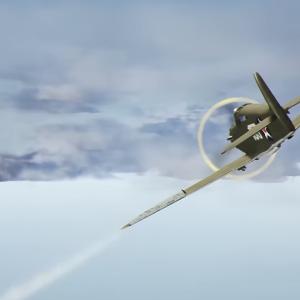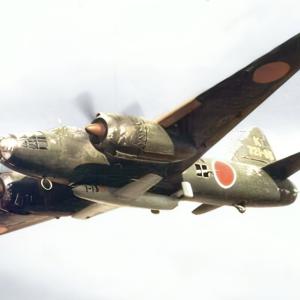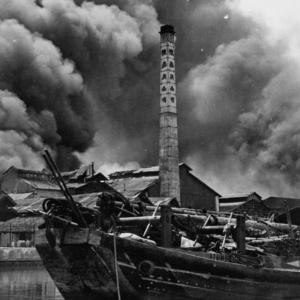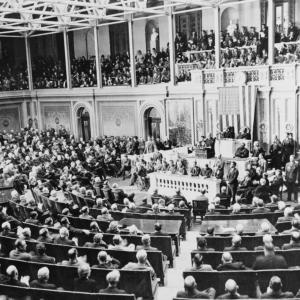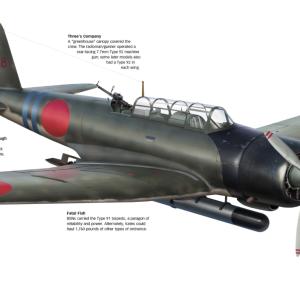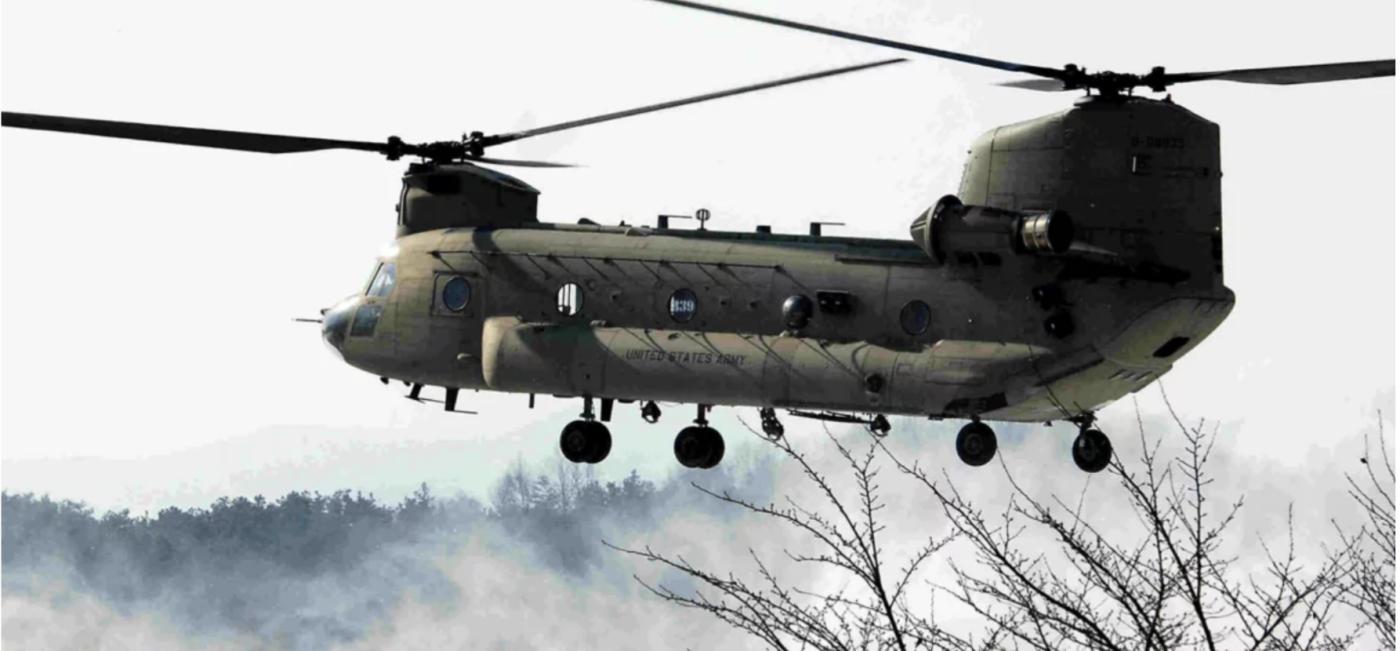
Chinook helicopter
The Chinook helicopter, officially known as the CH-47 Chinook, is a powerful and versatile military transport aircraft with a distinguished history and role in a wide range of military and humanitarian operations. Developed to meet the logistical needs of modern warfare, the Chinook's design, capabilities, and ongoing service have made it one of the most recognisable helicopters in the world. Its primary role is to transport heavy and oversized cargo, personnel, and equipment in various environments, including those that are otherwise difficult or dangerous to access by other means.
The Chinook was designed by the Boeing Vertol division of the Boeing Company in the early 1960s, building on the company's expertise in rotary-wing aircraft. The U.S. Army identified a need for a medium to heavy-lift helicopter capable of operating in various environments, especially for transporting large amounts of equipment and personnel. Boeing Vertol, which had a history of designing successful helicopters, including the V-44 and the Vertol Model 107, was tasked with this challenge. The CH-47 prototype first flew in 1961, and it was officially adopted by the U.S. Army in 1962.
The Chinook's distinctive design includes a tandem-rotor configuration, where two large rotors are mounted one in front of the other. This design was chosen because it allows for a significant reduction in the need for a tail rotor, which is typically found in traditional single-rotor helicopters. The tandem-rotor setup reduces the helicopter’s overall length and provides improved stability, especially in high-lift, heavy-cargo conditions. The Chinook is powered by two Honeywell T55 turboshaft engines that produce over 4,000 shaft horsepower each, providing it with the necessary thrust to carry heavy payloads while maintaining a fast cruising speed and operational altitude.
The Chinook has been in continuous production since its introduction, and it is primarily built at Boeing’s Ridley Township, Pennsylvania, facility. Boeing continues to produce the Chinook in updated models and variants, such as the CH-47F and the CH-47G, which include enhanced avionics, improved rotor blades, and more powerful engines to meet modern operational demands. While Boeing is the primary manufacturer, the Chinook has also been assembled and maintained by other Boeing facilities, and in some cases, the aircraft has been built in collaboration with foreign companies for international customers. The Chinook is used by several countries worldwide, including the United States, the United Kingdom, Canada, Australia, and many others, with the design continuing to evolve based on operational requirements.
The CH-47 Chinook has seen action in numerous conflicts around the world, proving to be an invaluable asset for both military and humanitarian operations. Its ability to lift heavy loads, carry large numbers of personnel, and operate in austere environments has made it a workhorse in multiple theaters of war. The Chinook first saw extensive combat use during the Vietnam War, where it was used primarily for transporting troops and supplies into and out of difficult terrain, such as dense jungles and areas with little to no infrastructure. The Chinook's size and lift capacity were ideal for carrying large amounts of cargo, including heavy equipment and artillery, into remote areas. The helicopter’s capability to operate in difficult environments made it a key asset for U.S. and allied forces during the conflict.
Following its success in Vietnam, the Chinook went on to serve in numerous other military operations. During the Gulf War in the early 1990s, the Chinook was used extensively by U.S. and coalition forces for troop transportation, resupply missions, and evacuations. It played a crucial role in delivering large quantities of supplies to front-line units and was vital in rapidly transporting heavy equipment to areas of operation. The Gulf War's fast-paced, mobile warfare demanded flexible and reliable transport solutions, and the Chinook excelled in this regard, ensuring that soldiers and supplies were quickly moved to where they were needed most.
The Chinook’s role in the wars in Afghanistan and Iraq further solidified its reputation as one of the most reliable heavy-lift helicopters in the world. In these conflicts, the Chinook was used not only for troop transport and resupply missions but also for more specialised roles such as airlifting vehicles, artillery, and even heavy equipment like bulldozers and cranes into combat zones. In Afghanistan, the Chinook proved to be especially valuable due to the country’s mountainous terrain, where other transport helicopters would have struggled to operate effectively. The Chinook’s ability to lift heavy payloads and its superior maneuverability in rugged landscapes allowed it to fulfill a wide range of logistical roles, from ferrying supplies to deploying combat troops. Its ability to operate in high-altitude environments and the ability to carry large amounts of cargo made it a critical part of the military's operations in Afghanistan.
In Iraq, the Chinook was crucial for providing support during the invasion and subsequent stabilization efforts. It was used to transport large quantities of equipment and personnel to forward operating bases, often under hostile conditions. Additionally, the Chinook provided evacuation capabilities, swiftly moving casualties from areas of combat to medical facilities. Its role in rapid deployment and supply chain management was essential in supporting the extensive coalition forces in the region.
The Chinook has also been used in peacekeeping and humanitarian missions around the world. Its versatility allows it to be employed in a variety of non-combat roles, including disaster relief, refugee evacuation, and delivering aid to areas with limited infrastructure. The Chinook’s ability to carry large loads and operate in areas that are difficult to access by land or traditional aircraft makes it ideal for such missions. For instance, after natural disasters, such as earthquakes and floods, the Chinook has been used to deliver food, water, medical supplies, and other critical resources to affected populations. In some cases, the Chinook has been called upon to evacuate civilians from danger zones or transport refugees to safer locations.
The Chinook’s continued use in modern military and humanitarian operations is a testament to its design and adaptability. Over the years, the helicopter has undergone numerous upgrades to ensure it remains capable of meeting the evolving needs of its users. Modern variants, like the CH-47F, feature improved avionics, better rotor blades, and more powerful engines, allowing the Chinook to continue serving in increasingly demanding environments. Despite advances in helicopter technology, the Chinook remains one of the most reliable and capable heavy-lift helicopters in the world, with a service life that spans over six decades.
In summary, the Chinook helicopter was designed by Boeing Vertol and has been in continuous production for more than 60 years. It has played an essential role in multiple wars, including the Vietnam War, Gulf War, and operations in Afghanistan and Iraq, where its heavy-lift capabilities and versatility were crucial. The helicopter is manufactured by Boeing, which continues to produce new variants to meet modern operational needs. The Chinook's service in military and humanitarian missions around the world highlights its importance as one of the most enduring and reliable aircraft in history. Its ongoing use underscores the critical role it plays in both military logistics and disaster relief.

